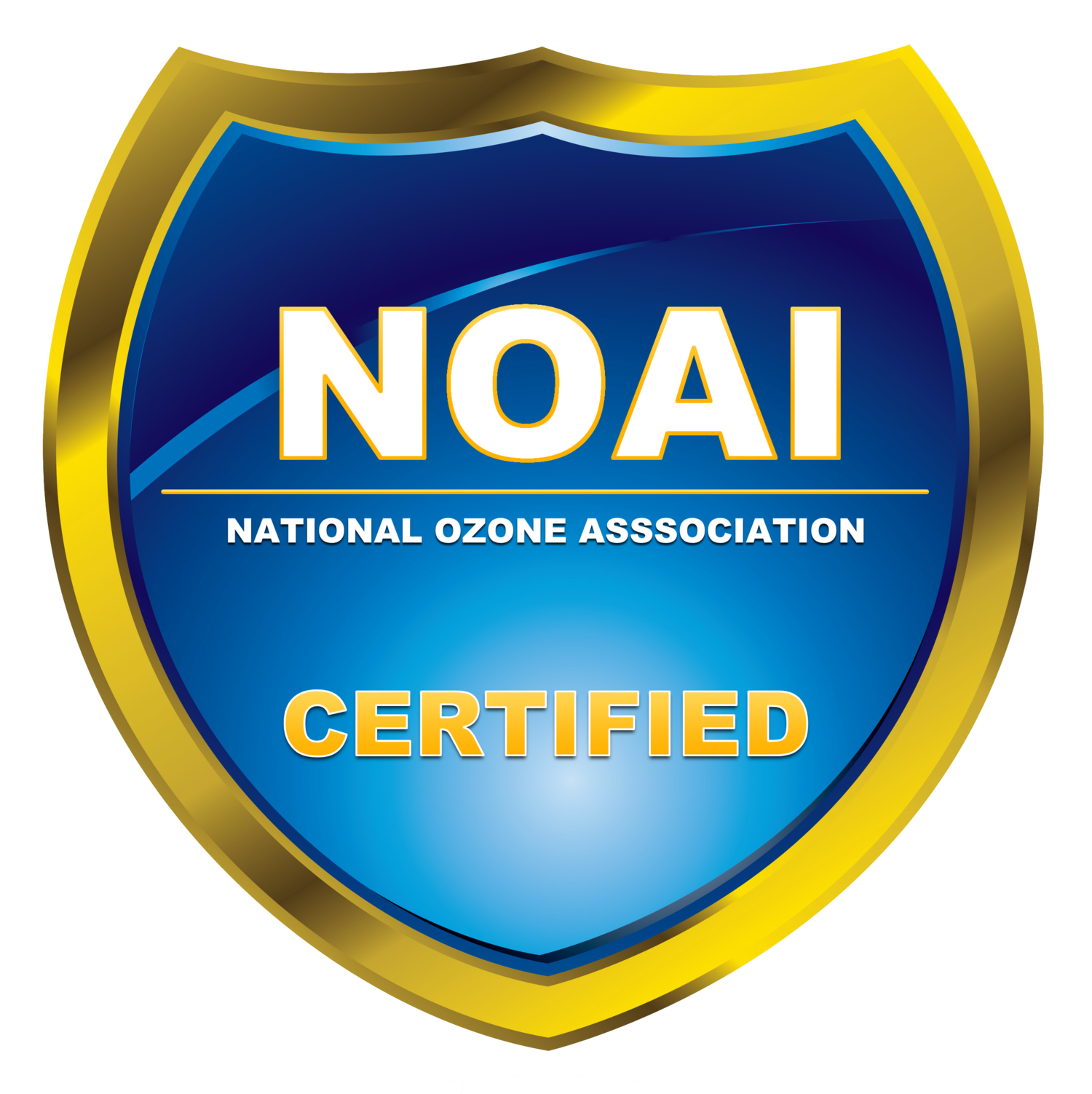Ozone vs. Chlorine Dioxide (ClO₂) for Odor Removal: Which Is Safer, Stronger, and More Effective?
Understanding the Basics
Ozone (O₃) and chlorine dioxide (ClO₂) are two powerful oxidizers used for professional odor remediation. While ozone occurs naturally and is generated on-site, ClO₂ is a man-made compound, highly effective against a wider range of contaminants.
Effectiveness in Odor Removal
Ozone excels against organic odors like smoke and mildew. But, better at organic odor problems and mold kill. Ozone is an “all-around” tool for odor remediation.
ClO₂ tackles more complex odors, including chemical and industrial smells. ClO2 is better at mitigating VOC type gases, like the very common formaldehyde threat, whereas ozone typicalky mutates formaldehyde into another aldehyde. IF the VOC reading is high, go with a chlorine dioxide treatment.
Result: ClO₂ slightly outperforms ozone in versatility.
Safety Considerations
Ozone requires thorough ventilation after treatment to avoid respiratory risks.
ClO₂ dissipates quickly with fewer harmful residues when applied professionally.
Result: ClO₂ is often viewed as the safer option for rapid use. Time is money, so professional remediation services will do better with a ClO2 treatment. Both processes require the use of carbon filler masks during the application phase. Once the building is aired out, normal activities may resume.
Application Differences
Ozone treatments may take longer, depending on odor severity.
ClO₂ can neutralize odors faster, sometimes within just a few hours.
Cost Considerations
Ozone systems involve higher upfront costs but lower ongoing expenses.
ClO₂ involves recurring material costs (tablets or solutions) per treatment.
Environmental Impact
Both methods are eco-friendly:
Ozone breaks down into oxygen.
ClO₂ degrades into harmless salts.
Final Verdict
If you need deep-set, organic odor removal and want a low-cost, long-term solution, ozone is a great fit.
For industrial, chemical, or fast turnaround odor challenges, chlorine dioxide is often the superior choice.
Ready to learn more about professional odor remediation solutions?
👉 Contact our team at NOAI today for expert advice and training options!
